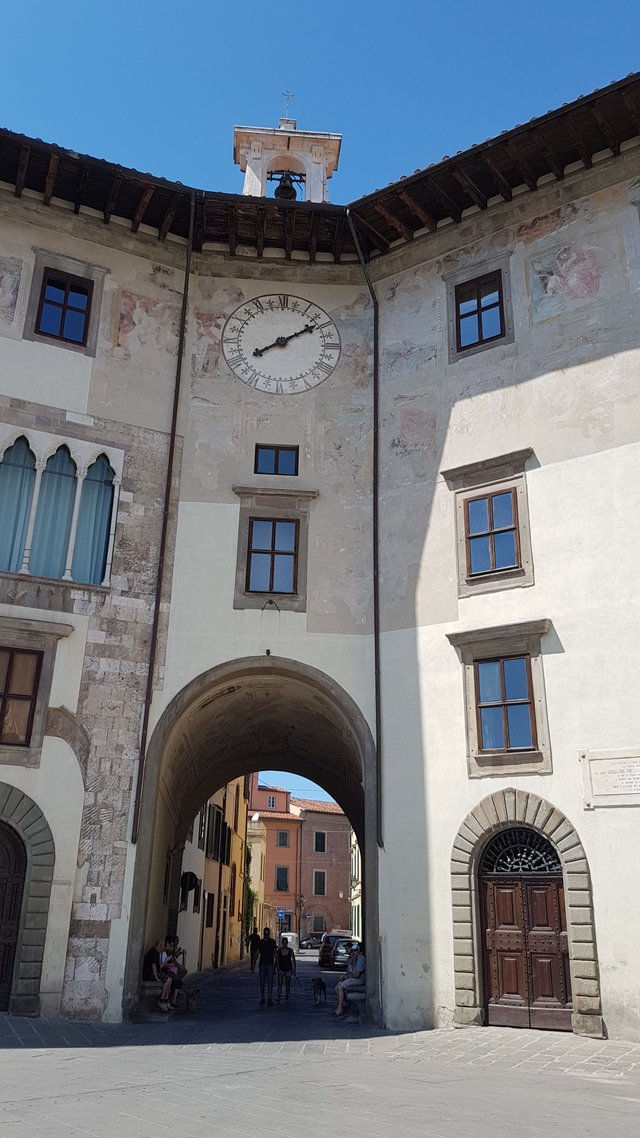Pissa tower
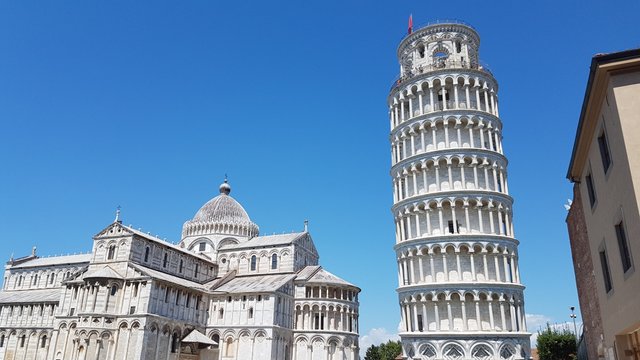
The Leaning Tower of Pisa (Italian: torre pendente di Pisa) or simply the Tower of Pisa (torre di Pisa [ˈtorre di ˈpiːza; ˈpiːsa]) is the campanile, or freestanding bell tower, of the cathedral of the Italian city of Pisa, known worldwide for its nearly four-degree lean, the result of an unstable foundation. The tower is situated behind the Pisa Cathedral and is the third-oldest structure in the city's Cathedral Square (Piazza del Duomo), after the cathedral and the Pisa Baptistry.
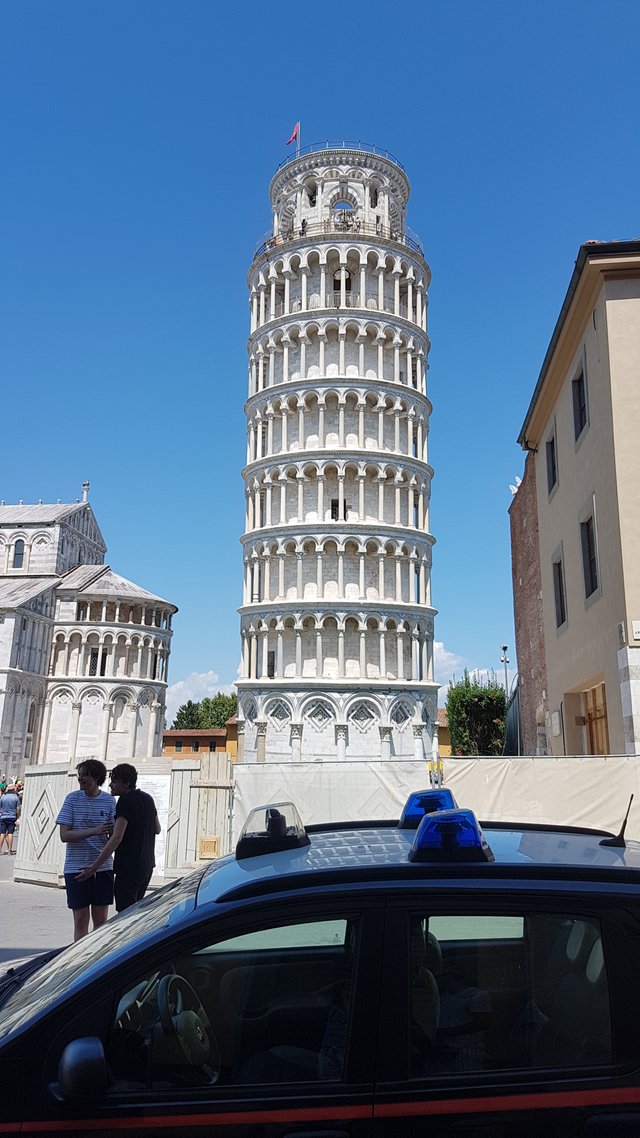
The height of the tower is 55.86 metres (183.27 feet) from the ground on the low side and 56.67 metres (185.93 feet) on the high side. The width of the walls at the base is 2.44 m (8 ft 0.06 in). Its weight is estimated at 14,500 metric tons (16,000 short tons). The tower has 296 or 294 steps; the seventh floor has two fewer steps on the north-facing staircase.
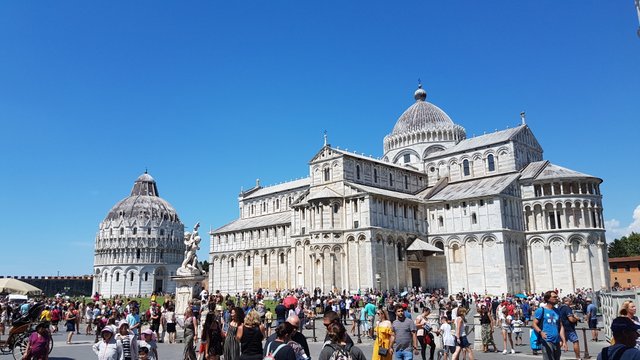
The tower began to lean during construction in the 12th century, due to soft ground which could not properly support the structure's weight, and it worsened through the completion of construction in the 14th century. By 1990, the tilt had reached 51⁄2 degrees. The structure was stabilized by remedial work between 1993 and 2001, which reduced the tilt to 3.97 degrees.
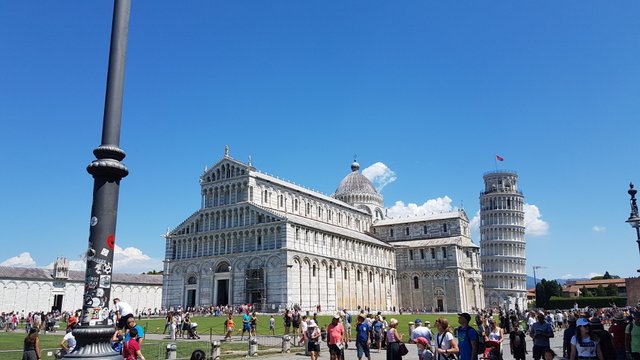
Architect
There has been controversy about the real identity of the architect of the Leaning Tower of Pisa. For many years, the design was attributed to Guglielmo and Bonanno Pisano,[7] a well-known 12th-century resident artist of Pisa, known for his bronze casting, particularly in the Pisa Duomo. Pisano left Pisa in 1185 for Monreale, Sicily, only to come back and die in his home town. A piece of cast bearing his name was discovered at the foot of the tower in 1820, but this may be related to the bronze door in the façade of the cathedral that was destroyed in 1595. A 2001 study seems to indicate Diotisalvi was the original architect, due to the time of construction and affinity with other Diotisalvi works, notably the bell tower of San Nicola and the Baptistery, both in Pisa.
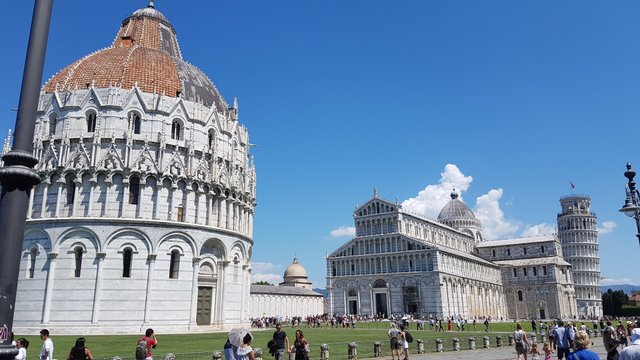
Construction
Construction of the tower occurred in three stages over 199 years. On 5 January 1172, Donna Berta di Bernardo, a widow and resident of the house of dell'Opera di Santa Maria, bequeathed sixty soldi to the Opera Campanilis petrarum Sancte Marie. The sum was then used toward the purchase of a few stones which still form the base of the bell tower. On 9 August 1173, the foundations of the tower were laid. Work on the ground floor of the white marble campanile began on 14 August of the same year during a period of military success and prosperity. This ground floor is a blind arcade articulated by engaged columns with classical Corinthian capitals.[citation needed] Nearly four centuries later Giorgio Vasari wrote: "Guglielmo, according to what is being said, in the year 1174, together with sculptor Bonanno, laid the foundations of the bell tower of the cathedral in Pisa".
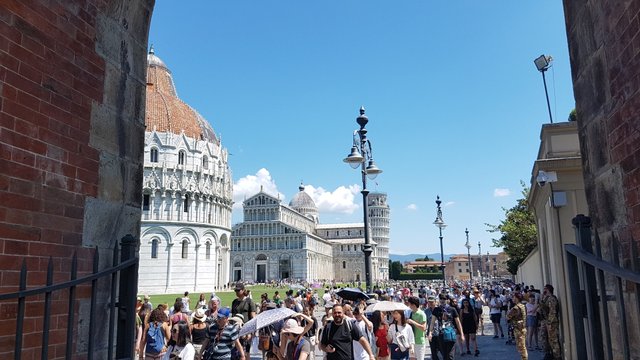
The tower began to sink after construction had progressed to the second floor in 1178. This was due to a mere three-metre foundation, set in weak, unstable subsoil, a design that was flawed from the beginning. Construction was subsequently halted for almost a century, as the Republic of Pisa was almost continually engaged in battles with Genoa, Lucca, and Florence. This allowed time for the underlying soil to settle. Otherwise, the tower would almost certainly have toppled. On 27 December 1233, the worker Benenato, son of Gerardo Bottici, oversaw the continuation of the tower's construction.
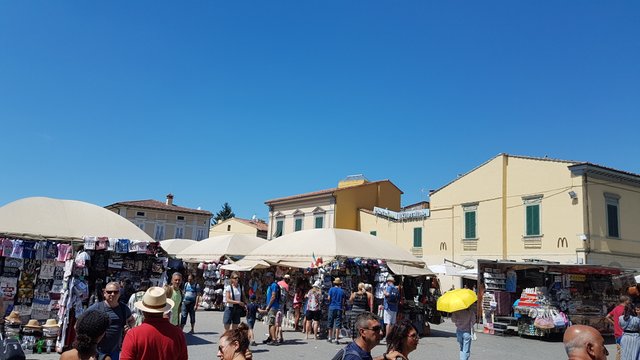
On 23 February 1260, Guido Speziale, son of Giovanni Pisano, was elected to oversee the building of the tower. On 12 April 1264, the master builder Giovanni di Simone, architect of the Camposanto, and 23 workers went to the mountains close to Pisa to cut marble. The cut stones were given to Rainaldo Speziale, worker of St. Francesco. In 1272, construction resumed under Di Simone. In an effort to compensate for the tilt, the engineers built upper floors with one side taller than the other. Because of this, the tower is curved. Construction was halted again in 1284 when the Pisans were defeated by the Genoans in the Battle of Meloria.
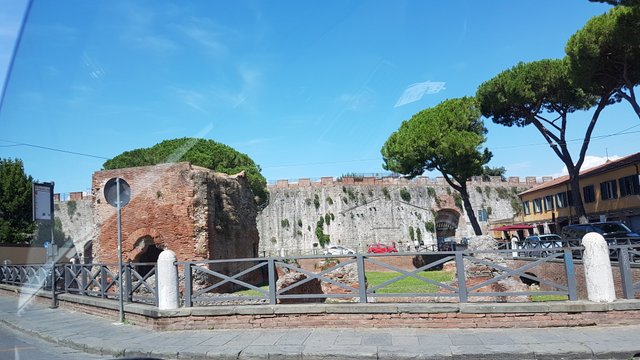
The seventh floor was completed in 1319. The bell-chamber was finally added in 1372. It was built by Tommaso di Andrea Pisano, who succeeded in harmonizing the Gothic elements of the belfry with the Romanesque style of the tower. There are seven bells, one for each note of the musical major scale. The largest one was installed in 1655.
